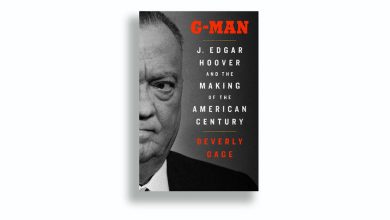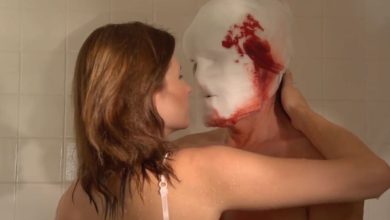4 Operas in 48 Hours: A Critic’s Marathon at the Met

Even for a critic who attends performances as a way of life, there were more than a few similarities to “Groundhog Day” in seeing four shows over 48 hours at the Metropolitan Opera this weekend.
I was getting off the subway at Columbus Circle — again. Walking up the broad steps to Lincoln Center — again. Shuffling into the will call line; showing proof of vaccination; raising my arms for a metal detector wand; holding out tickets to be scanned; entering the gilded, red velvet auditorium; drifting down the aisle to the same seat — again, and again, and again.
Only the music changed, an assemblage of greatest hits by Mozart, Verdi and Puccini. These performances felt especially precious amid a coronavirus surge that has shuttered Broadway productions, ballets, concerts and festivals. Yet the mighty Met — through strict health protocols, a deep bench of replacement artists and sheer luck — has managed not to cancel once.
The company, America’s largest performing arts institution, is not merely staying open through Omicron. It is doing so with an exclamation point, glorying in the repertory system enabled by its enormous budget and backstage forces, by which it can, astonishingly, present four titles in a single weekend.
A marathon like mine, which began Friday evening, has been possible on occasion since fall 2019, when the Met added its first regular matinees on Sundays in addition to its standard Saturdays, finally bowing to changing attendance patterns. It was an achievement to be reckoned with, even before the pandemic: There are other big repertory companies, but they don’t do this.
Within the grand yet cozily warm theater, the freezing weather outside is being greeted with the most standard of standards. That wasn’t the case at the Met this fall, when audiences got not one but two recent American operas, “Fire Shut Up in My Bones” and “Eurydice,” and “Porgy and Bess” alongside the newcomers. There were the first Met performances of the original version of “Boris Godunov,” as well as a family-friendly adaptation of Massenet’s rare “Cendrillon.” Wagner’s sprawling “Die Meistersinger von Nürnberg” returned for the first time in seven years.
Now, though, the core repertory is solidly back. This January at the Met is the operatic equivalent of grilled cheese dipped into tomato soup on a snowy afternoon. The month’s schedule is filled entirely by Verdi’s “Rigoletto,” Mozart’s “Le Nozze di Figaro” and Puccini’s “Tosca” and “La Bohème,” four works that have been at the center of the company’s operations for over a century.
All were fundamental to my earliest education in the art form, and seeing them in close quarters brought out unexpected resonances. It was audible how much Puccini’s crosscutting of the quotidian and sublime — when the bohemians’ chuckling fades, for example, into the love-duet surge of “O soave fanciulla” — owes to moments in “Figaro” like the one when a bubbly ensemble is suddenly, briefly struck through with soaring longing.
Despite masking reminders and the singers being discouraged from joining hands at the curtain calls, the performances felt largely normal. Nothing was close to sold out, but the house was never startlingly empty. And other than the (considerable) loss of the baritone singing Rigoletto, there were no last-minute cancellations among the soloists, virus-related or otherwise — a tribute to the Met’s precautions.
That baritone, Quinn Kelsey, is expected to be back on Saturday; filling in for him as the tortured court jester on Friday was Michael Chioldi, solidly resonant and credible in the role. Piotr Beczala was a grinning Duke, but both men paled for interest next to Rosa Feola’s Gilda. This soprano’s performance in the first act was the glory of the weekend, including her unusually assertive take on the aria “Caro nome,” more womanly than girlish.
But even more remarkable was the glassy shimmer her voice took on a few minutes earlier, singing “Lassù in cielo” so that you heard a premonition of the character’s grim fate. Feola lacked a final measure of fullness and amplitude in the final-act trio with Sparafucile and Maddalena, but she was persuasive throughout in creating (with the director, Bartlett Sher) a more mature — and therefore more disturbing — Gilda than the norm.
Daniele Rustioni’s conducting was moderate in pace and impact, just as it was the following afternoon in a light, gentle “Figaro.” Golda Schultz’s soprano isn’t the lushest or largest, but as the Countess she delivered a poised, silky “Porgi amor.” (Her awkward interpolating in “Dove sono” was a mistake, though, as was the blustery Adam Plachetka’s unnecessary additions to Count Almaviva’s “Vedro mentr’io sospiro.”)
Isabel Leonard, Cinderella at the Met last month, sounded fresh as Cherubino — floating the line “E se non ho chi m’oda” with haunting softness in “Non so più” and delivering a chocolaty “Voi che sapete.” Lucy Crowe’s reedy soprano and cheerfully understated presence as Susanna paired nicely with the bass-baritone Ryan McKinny’s easygoing Figaro.
Even in this lightly rehearsed revival, there was ensemble spirit, as there was among the youthful cast of “La Bohème” on Sunday afternoon. The tenor Charles Castronovo sang a gallant Rodolfo, the baritone Lucas Meachem a forceful Marcello. As the dying Mimì, the soprano Maria Agresta’s tone was a little wiry, her presence a little stiff. The bass Peter Kellner, making his Met debut as Colline, sang a full-bodied “Vecchia zimarra,” sober without trudging.
The conductor Carlo Rizzi, who appeared with the company for the first time in “Bohème” in 1993 and has since led more than 200 performances here, paced the music superbly, as he had in an enjoyable “Tosca” the night before. The soprano Elena Stikhina has a booming international career but has barely appeared at the Met, so there was considerable anticipation of her interpretation of that opera’s title role, a classic diva showcase.
She had a soft-grained, seductive tone, even in sailing high notes, as well as the confidence to sing certain passages very quietly — notably the start of “Vissi d’arte,” which she almost murmured; her jealousy and fury were underplayed and patiently felt, not frantic. Her Tosca was earnestly sung and acted, and I hope her visits to the Met grow more frequent.
As Cavaradossi, the tenor Joseph Calleja has long had an appealingly plangent, almost sobbing quality to his voice; on Saturday, though, that sob expanded into a pulsing beat in his sound, disrupting the musical line and turning high notes into croaks. The baritone George Gagnidze was a functional rather than luxurious Scarpia, but he projected convincing menace.
Nothing over the weekend was unmissable, but there was something more than the sum of their parts — something genuinely inspiring — in seeing them all together during this tough season. And there is another opportunity, Jan. 21-23, to re-enact my marathon. Indeed, you can do me one better: That Sunday, the afternoon “Figaro” will be followed in the evening by a solo recital featuring the star soprano Sonya Yoncheva.
A week after that, having gorged on operatic chicken noodle soup and macaroni and cheese all January, the company takes a (long planned) month off from performances. It will be richly earned.





